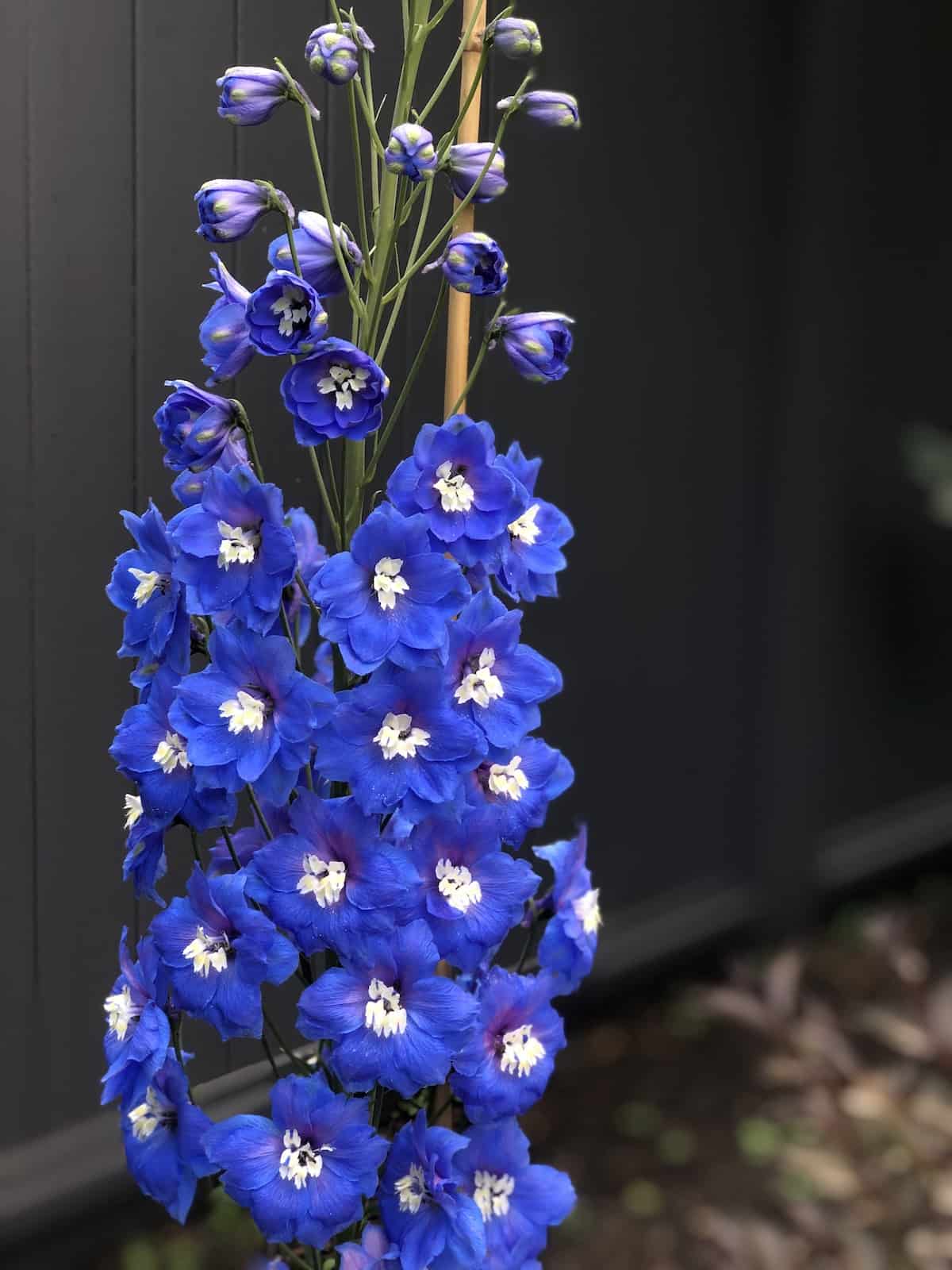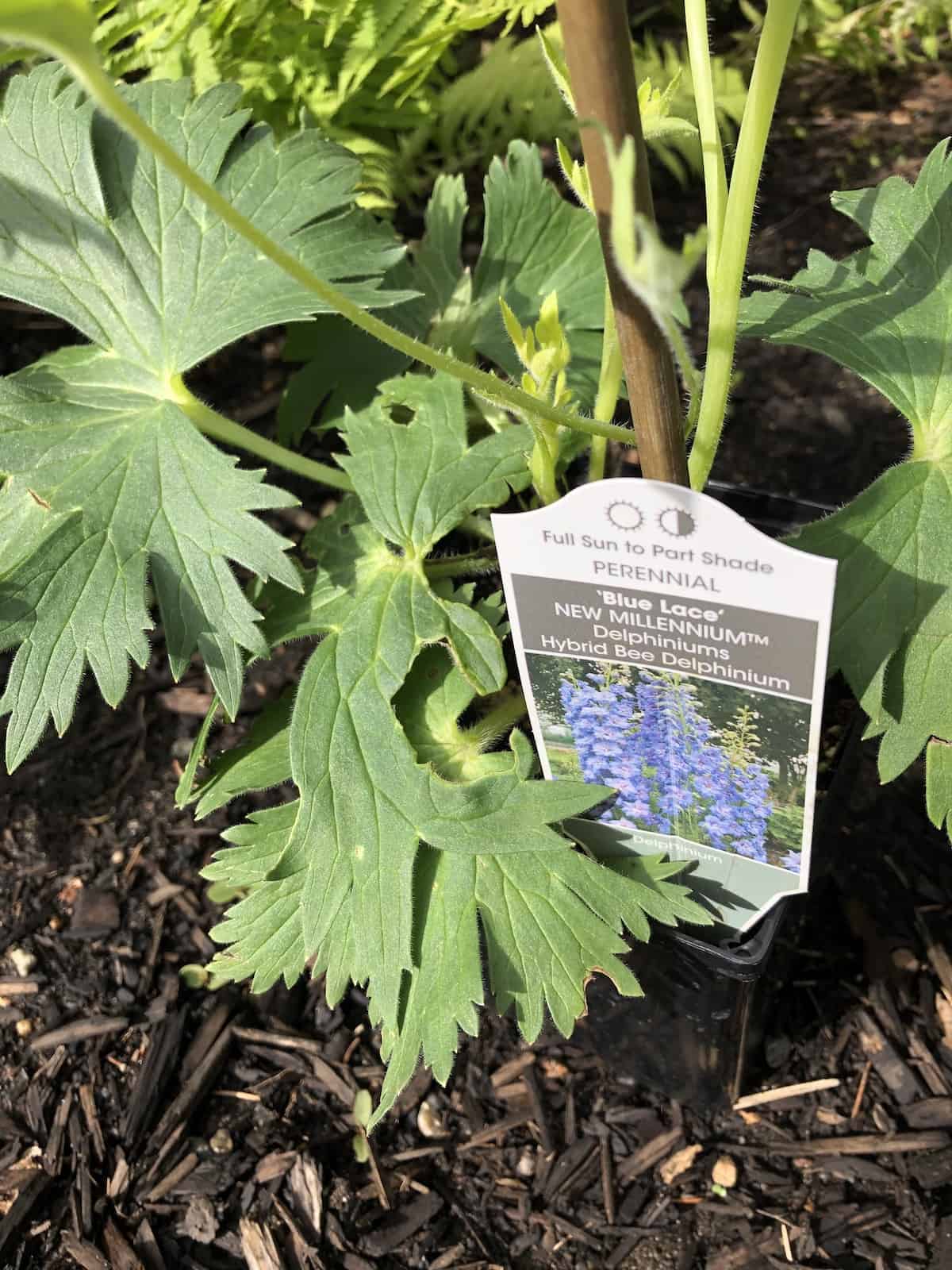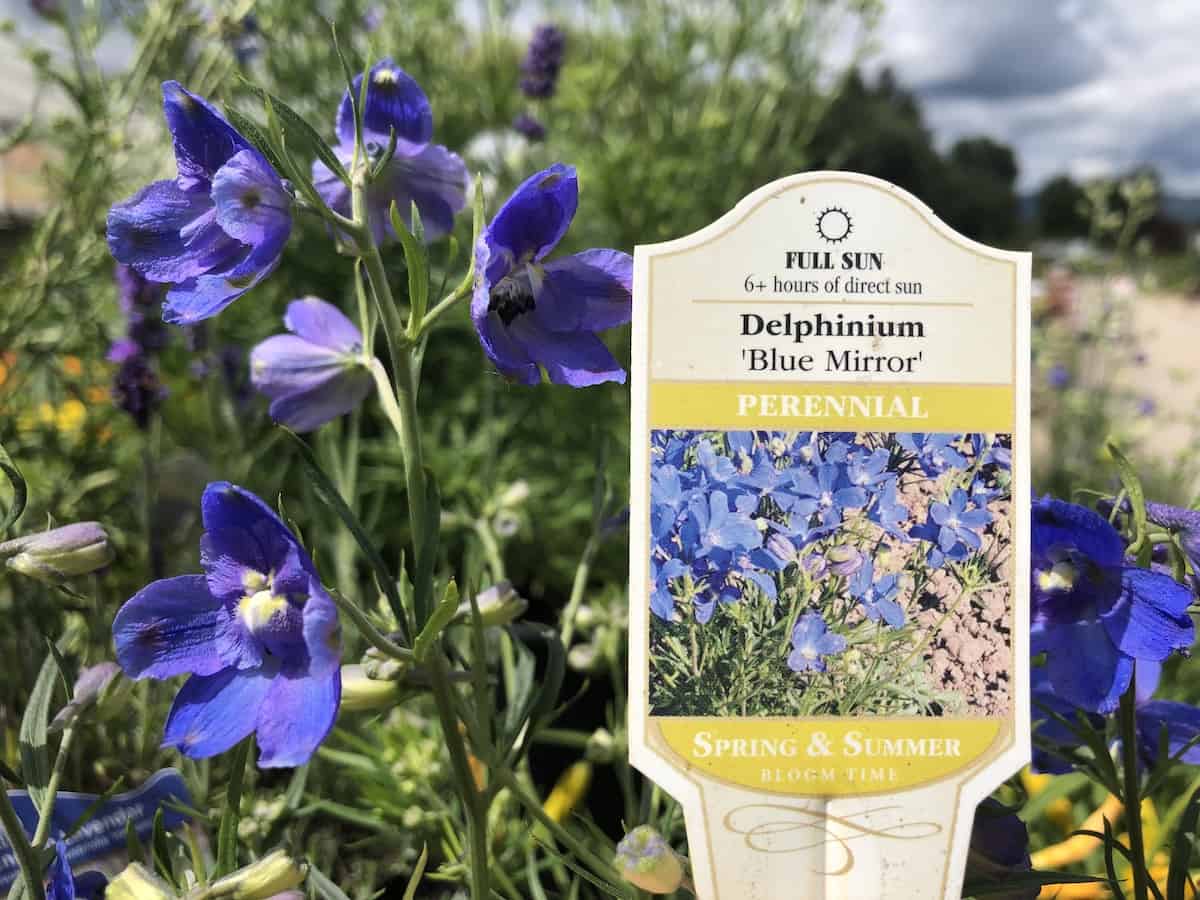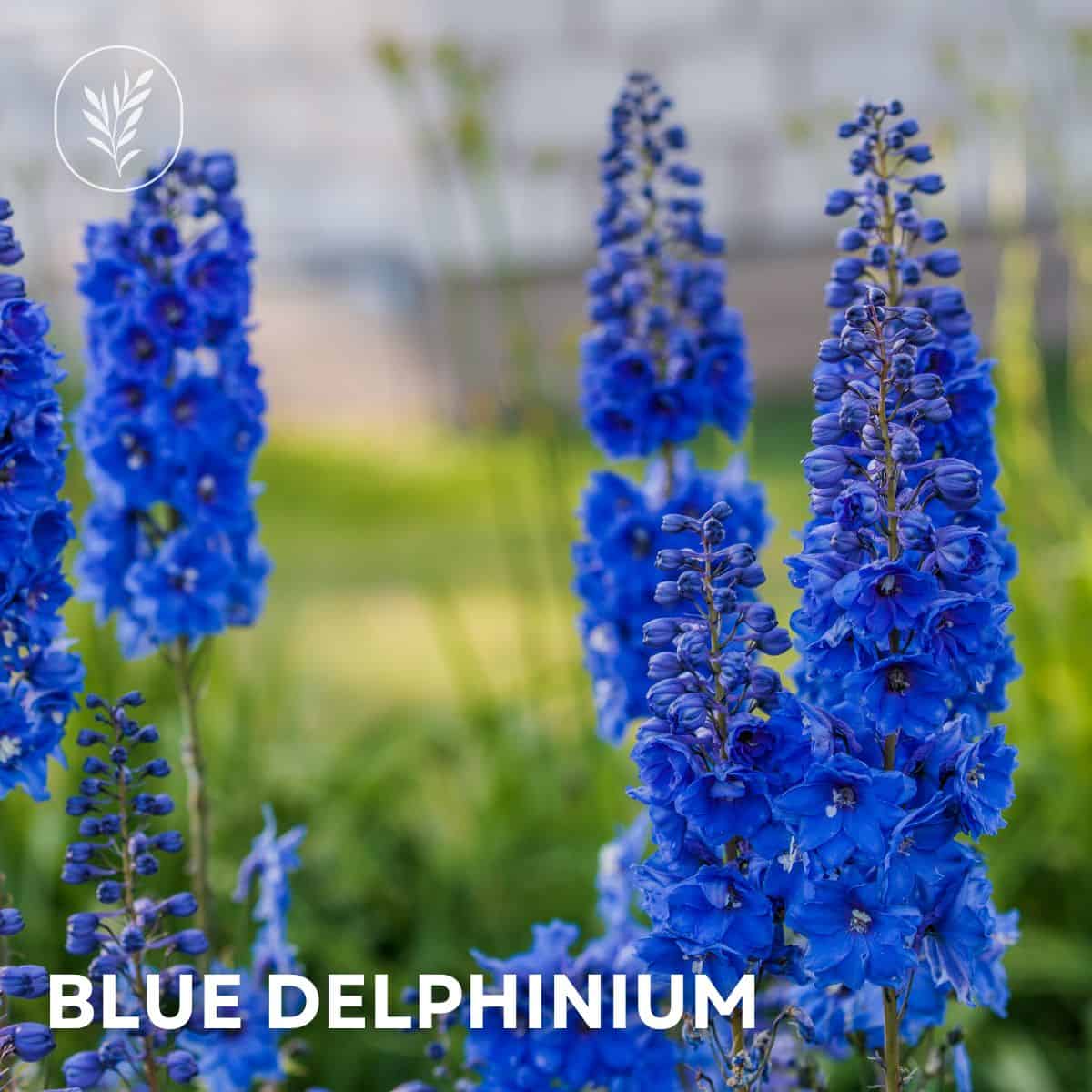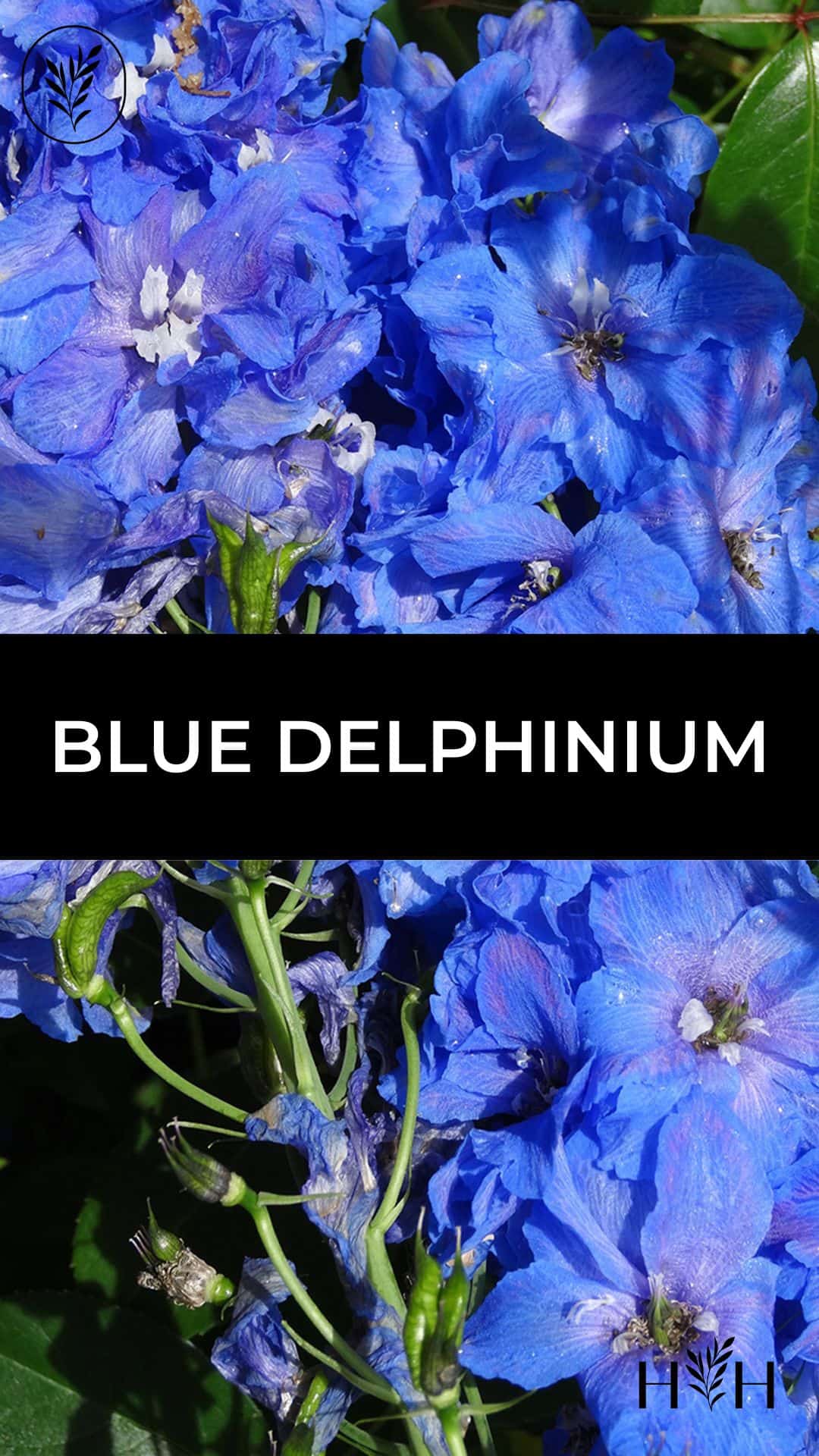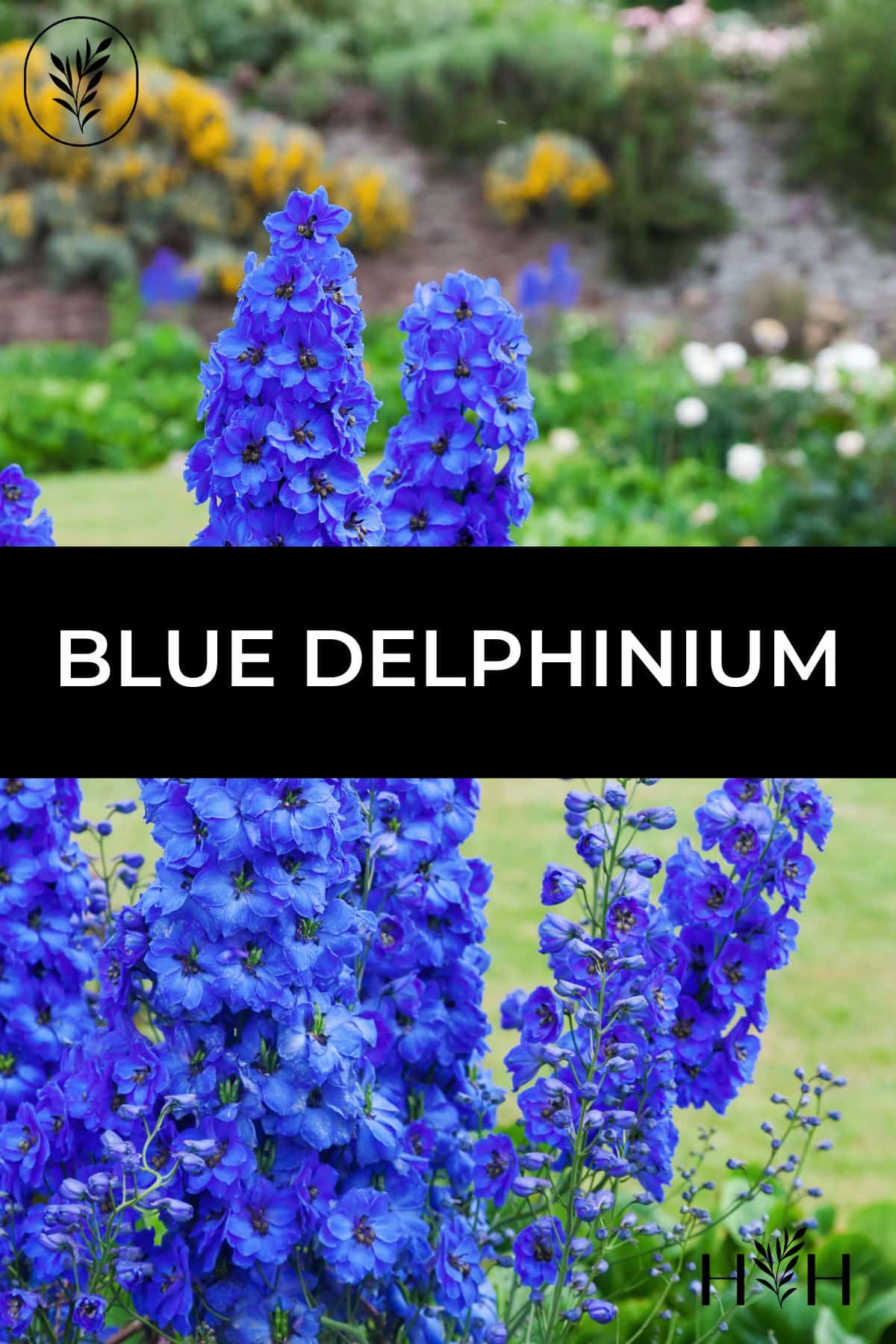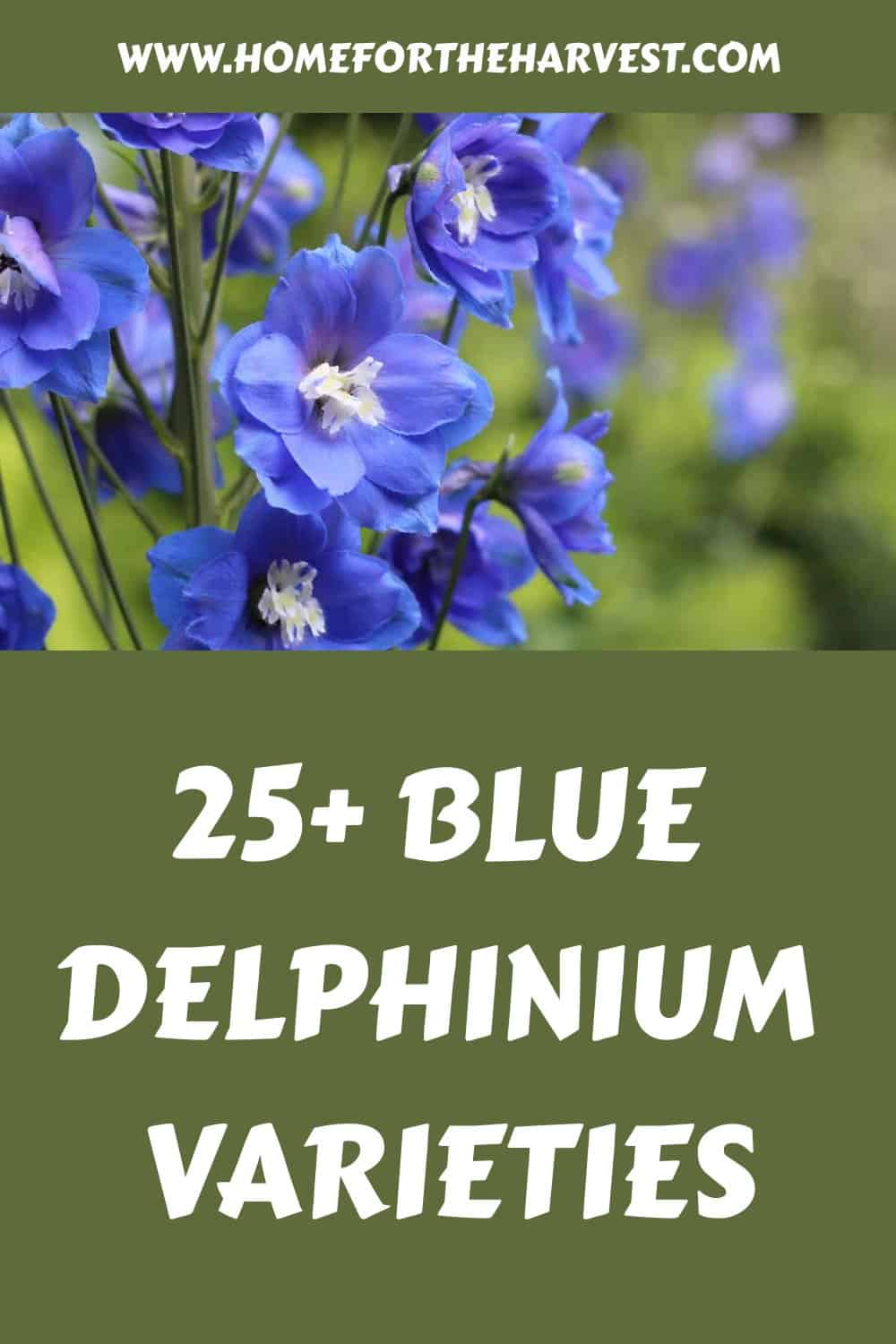Blue delphiniums are specific cultivars within the genus Delphinium that naturally produce blue flowers. These plants bloom in rare blue shades by absorbing specific light wavelengths, balancing acidity levels, and creating their own custom pigments. The most popular blue delphiniums include ‘Cobalt Dreams,’ ‘Summer Blues,’ ‘Blue Lace,’ and ‘Blue Butterfly.’
Blue delphinium basics
Blue delphiniums are the queens of the early-summer perennial border garden. These towering beauties can be grown at home from blue delphinium seeds of most varieties, and can also generally be purchased locally as seedlings or clone plants.
Blue delphiniums are perennial plants that grow back every year from the roots. These plants tend to live for about 5 years until the center of the root crown starts to deteriorate and the plant is best divided up and replanted. Delphiniums usually produce one main show of flower spikes in early summer followed by intermittent blooms in late summer.
Delphiniums bloom at their best in full sun planting locations with mild temperatures and good air circulation. Look for rich loamy soil that drains excess water out easily. Delphiniums thrive in soil with a neutral to slightly alkaline pH (which can be achieved by adding garden lime in marginal soil). These hungry plants are usually fed in early spring with a slow-release fertilizer, plus supplemental feedings during the summer.
The meaning of the blue delphinium is grace. Blue delphinium is a dignified, nearly-royal flower that’s perfect to celebrate a joyous occasion. Happily, delphiniums are the birthday flower of July, and they represent an open and loving heart. That said, these flowers are toxic and should be treated with care and kept away from pets and kids. This characteristic also makes them deer resistant.
“Glamourous and aristocratic delphinium spires come in colors not often seen elsewhere in the garden – most notably blues, including ultramarine, celestial, and iridescent examples.”
Martha’s Flowers: A Practical Guide to Growing, Gathering, and Enjoying, by Martha Stewart & Kevin Sharkey
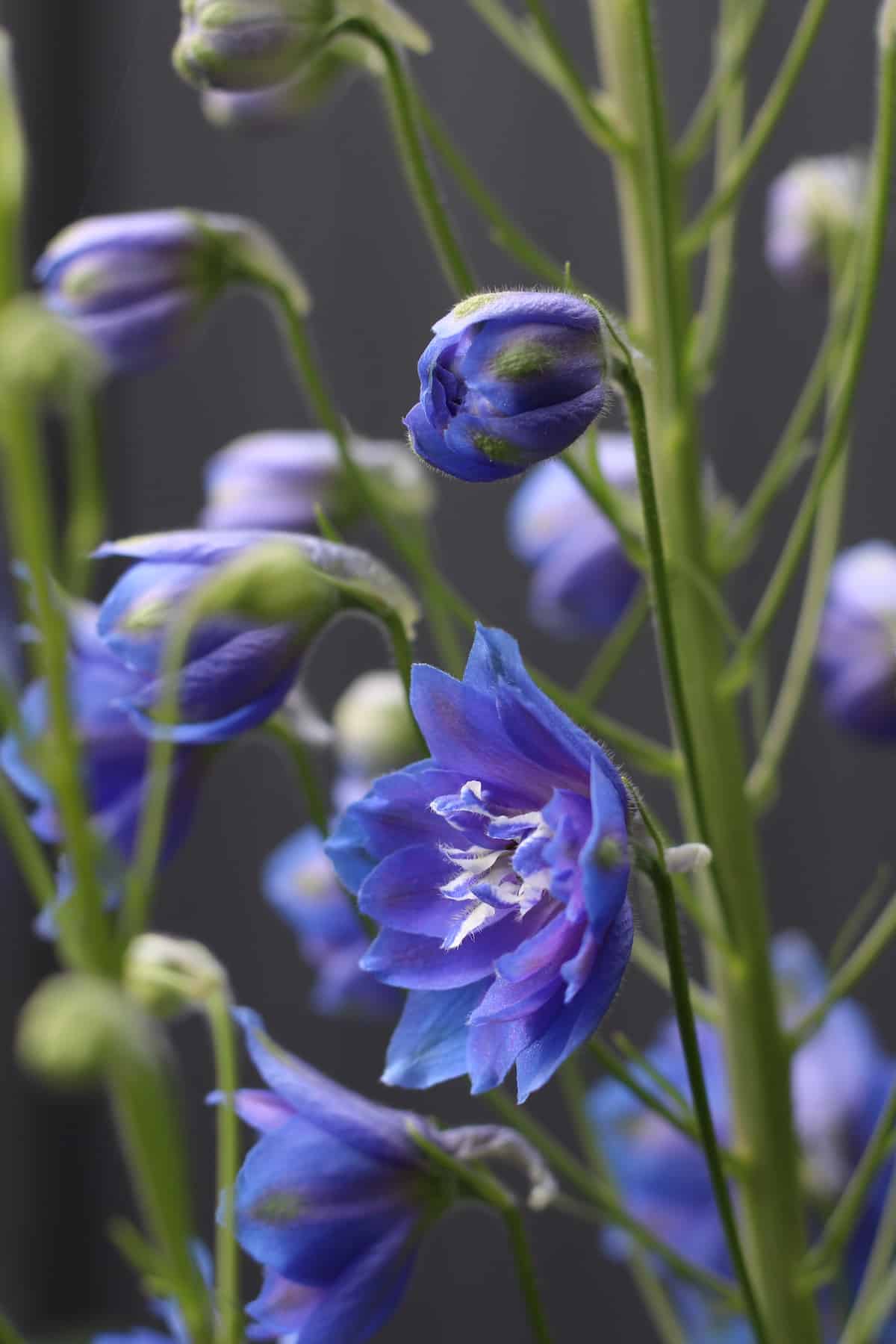
Blue delphinium varieties
Here are some of the best blue delphinium varieties. These hybrids are grouped by series, with most series families of delphinium having more than one blue variety. Elatum group delphiniums tend to be the tallest and have some fantastic shades of blue as well as purple, pink, and white. Pacific hybrids are similar but tend to be a foot or two shorter than Elatum hybrids. Belladonna delphiniums tend to be mainly blue or white.
1. New millennium delphiniums: Blue hybrids
The New Millennium Delphinium Series is one of the best choices for finding top-notch blue delphinium plants. These plants are mainly Delphinium Elatum delphiniums (English Delphinium Hybrids) that are known for their tall, strong stems. They are also resistant to powdery mildew, root rot, blight, and rust. New Millennium Delphiniums are also known for their excellent tolerance of summer heat, high humidity, and winter cold hardiness.
These cultivars from the stellar New Millennium series of hybrid delphinium come in blue shades:
- Cobalt Dreams Delphinium (true, rich blue)
- Blue Lace Delphinium (light blue, hint of lavender)
- Moonlight Blues Delphinium (light blue)
- Royal Aspirations Delphinium (royal blue)
- Sunny Skies Delphinium (light blue)
New Millennium delphiniums were bred by Dowdeswell’s Delphiniums in Whanganui, New Zealand. I found some at Home Depot in the spring, and also order plants from Phoenix Perennials in Canada. In the USA, they can be ordered from Spring Hill Nurseries, Nature Hills, or Walters Gardens. Or ask your local garden center to order them for you!
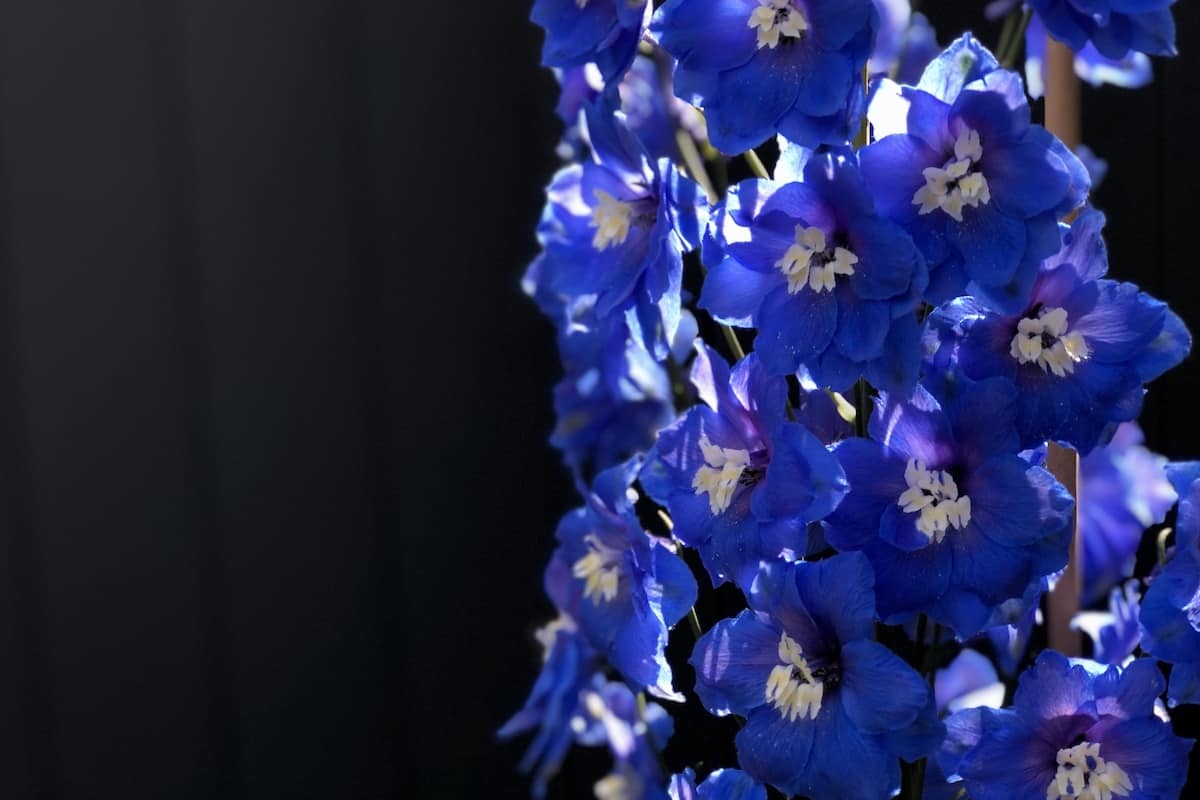
“There are very few true blue flowers in nature, so Delphinium ‘Cobalt Dreams’ stands out. Let the qualities that make the flower special in the garden – its height, color, and variety on the stem – be your guiding principles once you bring it inside, with arrangements that play to those strengths.”
Martha’s Flowers: A Practical Guide to Growing, Gathering, and Enjoying, by Martha Stewart & Kevin Sharkey
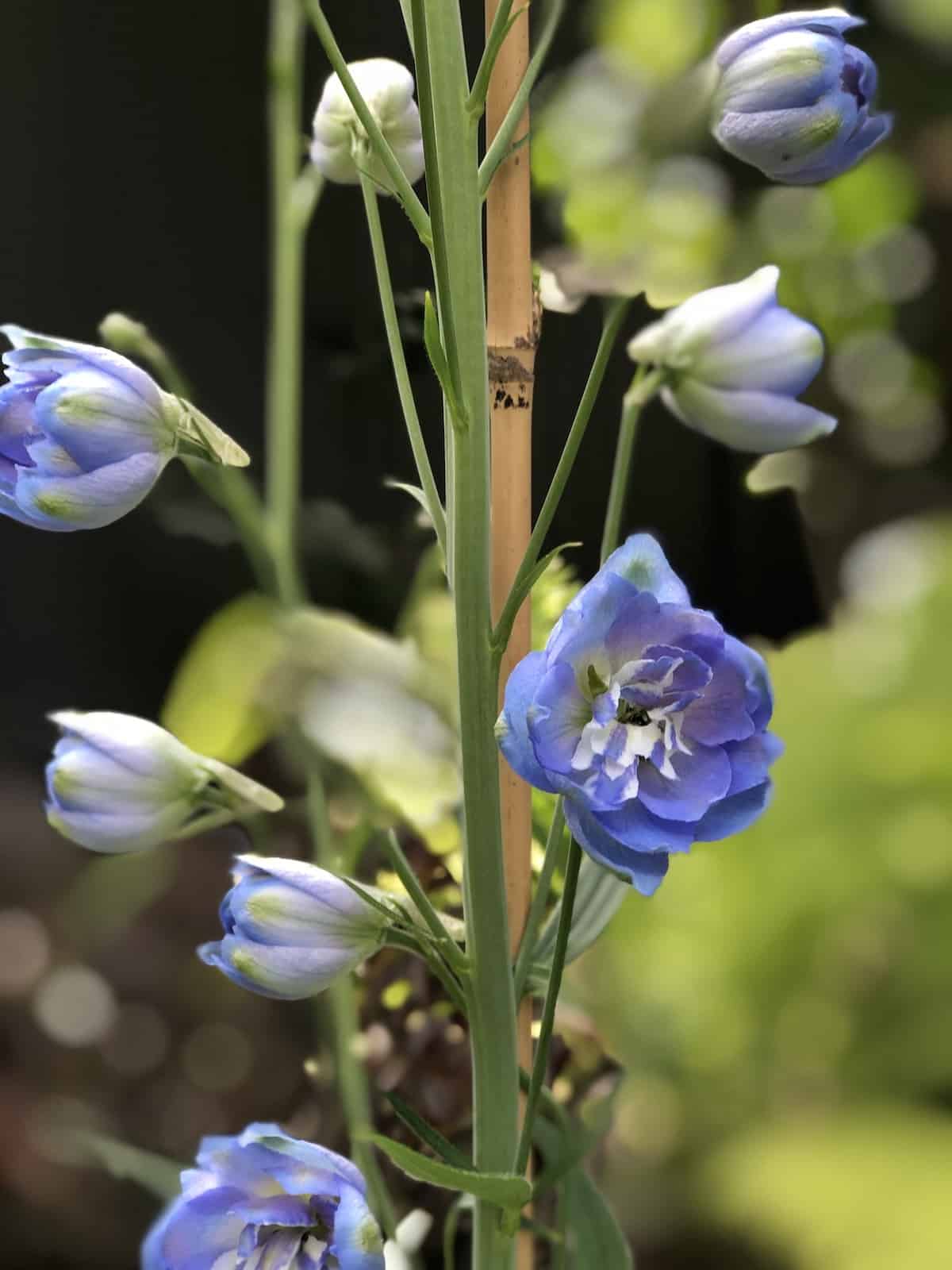
2. Blue million-dollar hybrid delphiniums
The Million Dollar Series is one of the most popular lines of delphiniums. These new hybrids grow well in cooler climates and may need partial shade in the afternoons in areas with hot summer temperatures. The plants are resistant to common diseases such as southern blight, gray mold, and fungal spots. The flowers are hybrid bee delphinium types with a semi-double petal appearance.
Here are two lovely blue delphiniums (Delphinium elatum) plants from the Million Dollar series:
- Million Dollar Blue Delphinium (rich true blue)
- Million Dollar Sky Delphinium (light sky blue)
Million Dollar series blue delphinium types are offered by Proven Winners and can be ordered online or through local garden centers. I’ve also seen Million Dollar series delphiniums sold in generic packaging at big box garden centers like Home Depot.
3. Pacific giant delphiniums (blue varieties)
The Pacific Giant series has been a mainstay of cottage-style gardens and flower borders for decades. Like most delphiniums, these heavy feeders do well with a spring application of organic granular fertilizer and regular additions of compost.
These specific cultivars in the ever-popular Pacific Giant series of hybrid delphinium come in blue shades:
- Blue Jay Delphinium (medium blue)
- Blue Bird Delphinium (navy blue)
The Pacific Giant Delphiniums were developed in California by Frank Reinelt (read more from Thompson & Morgan on delphinium breeding).
4. Magic fountains series – Blue dwarf delphiniums
Magic Fountains delphiniums are dwarf versions of the Pacific Giant series. Here are some blue delphinium varieties from the Magic Fountains series:
- Dark Blue White Bee (indigo blue & purple)
- Dark Blue Dark Bee (dark indigo)
- Sky Blue (sky blue)
5. Belladonna series – Blue free-form delphiniums
Belladonna delphiniums are shorter than English hybrids and tend to have more space between the flowers on the stalks. They are a popular choice for informal garden style.
Here are some Belladonna delphiniums with blue flowers:
- Bellamosum Delphinium (deep blue)
- World Peace Delphinium (deep blue)
- Piccolo Delphinium (indigo blue)
- Blue Bees Delphinium (sky blue)
- Cliveden Beauty Delphinium (light blue)
Reference & More Info: Delphinium (Belladonna Group), Cornell University
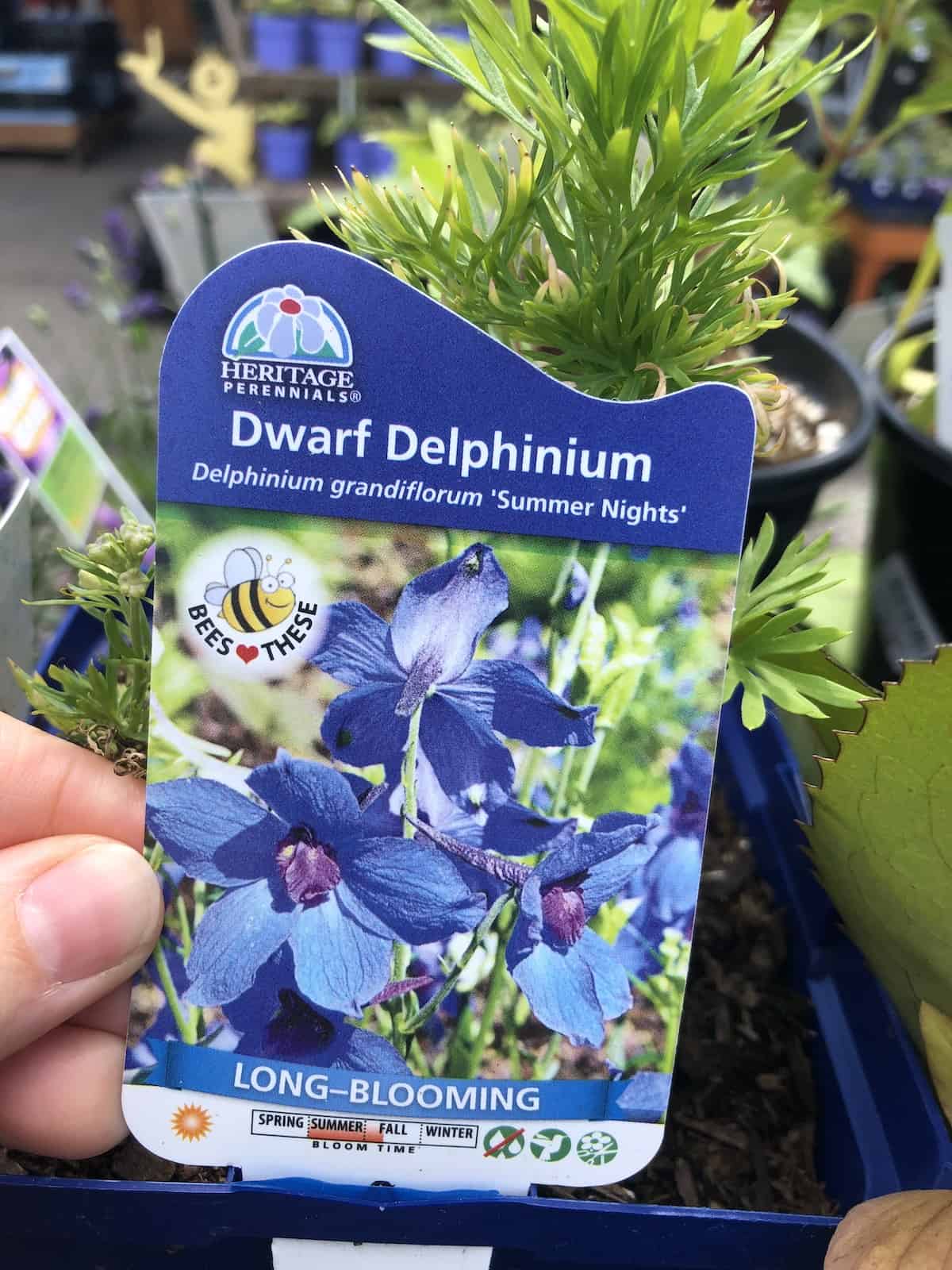
6. Delphinium grandiflorum – Blue varieties
Here are some additional blue-blooming Delphinium grandiflorum types:
- Summer Nights (deep, true blue)
- Delfix Blue (medium blue)
- Blue Butterfly Delphinium (indigo blue)
- Diamonds Blue Delphinium (medium blue with purple)
- Blue Mirror Delphinium (electric blue with purple)
- Banner Royal Blue (violet-blue)
7. Delphinium elatum (Blue Varieties)
These named cultivars of Delphinium elatum bloom in shades of blue:
- Guardian Blue Delphinium (blue and purple)
- Aurora Blue Delphinium (medium blue)
- Dasante Blue Delphinium (violet-blue)
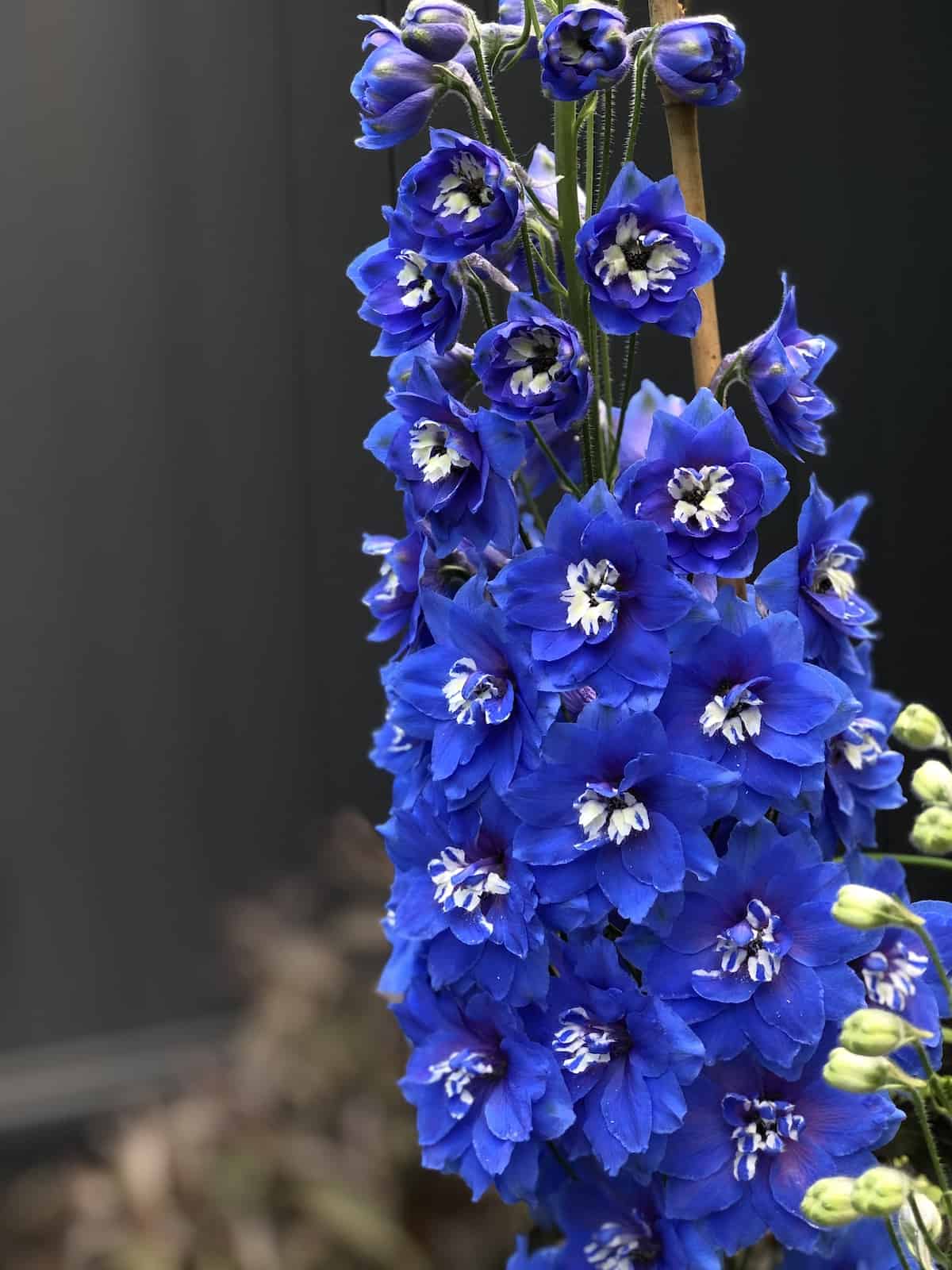
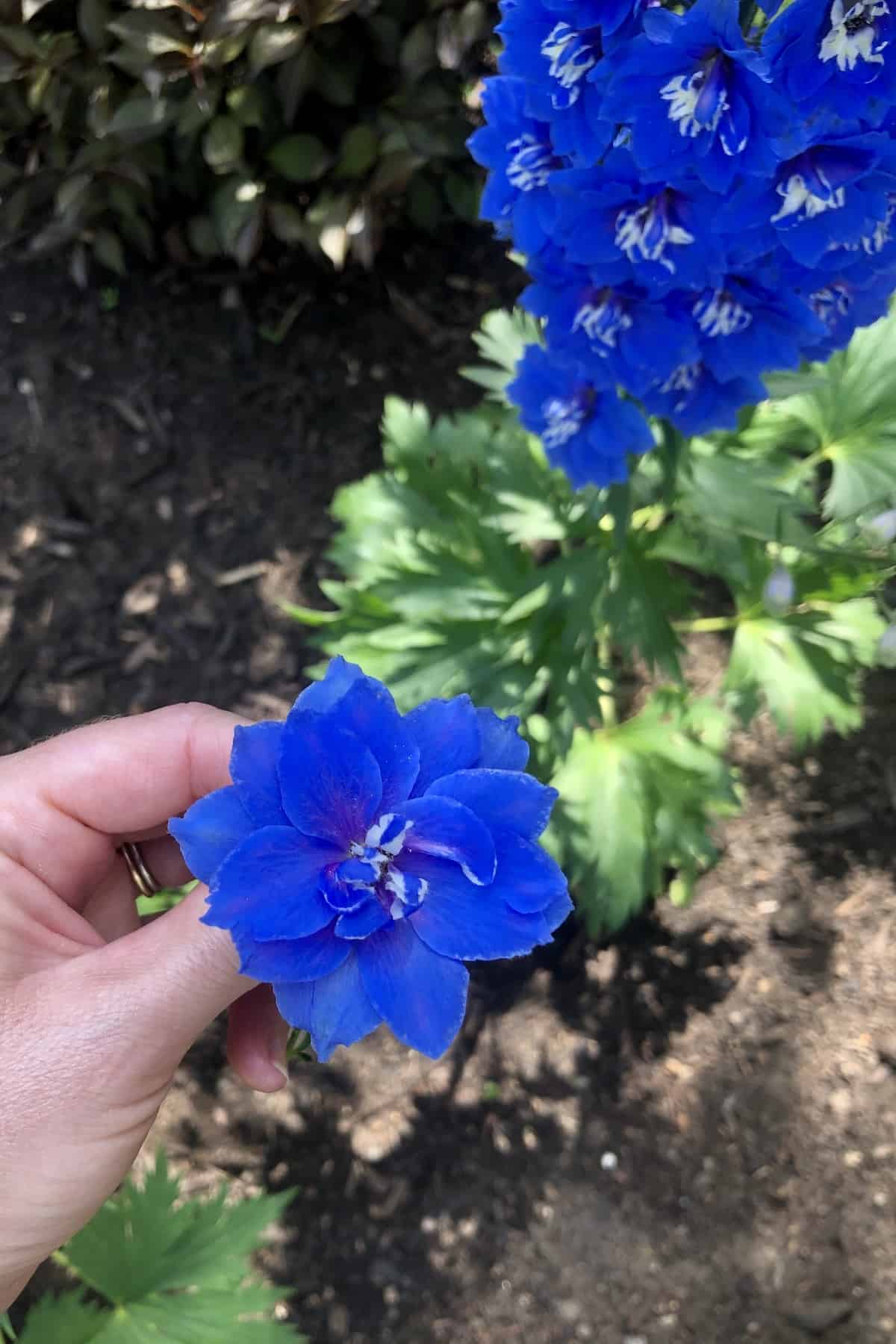
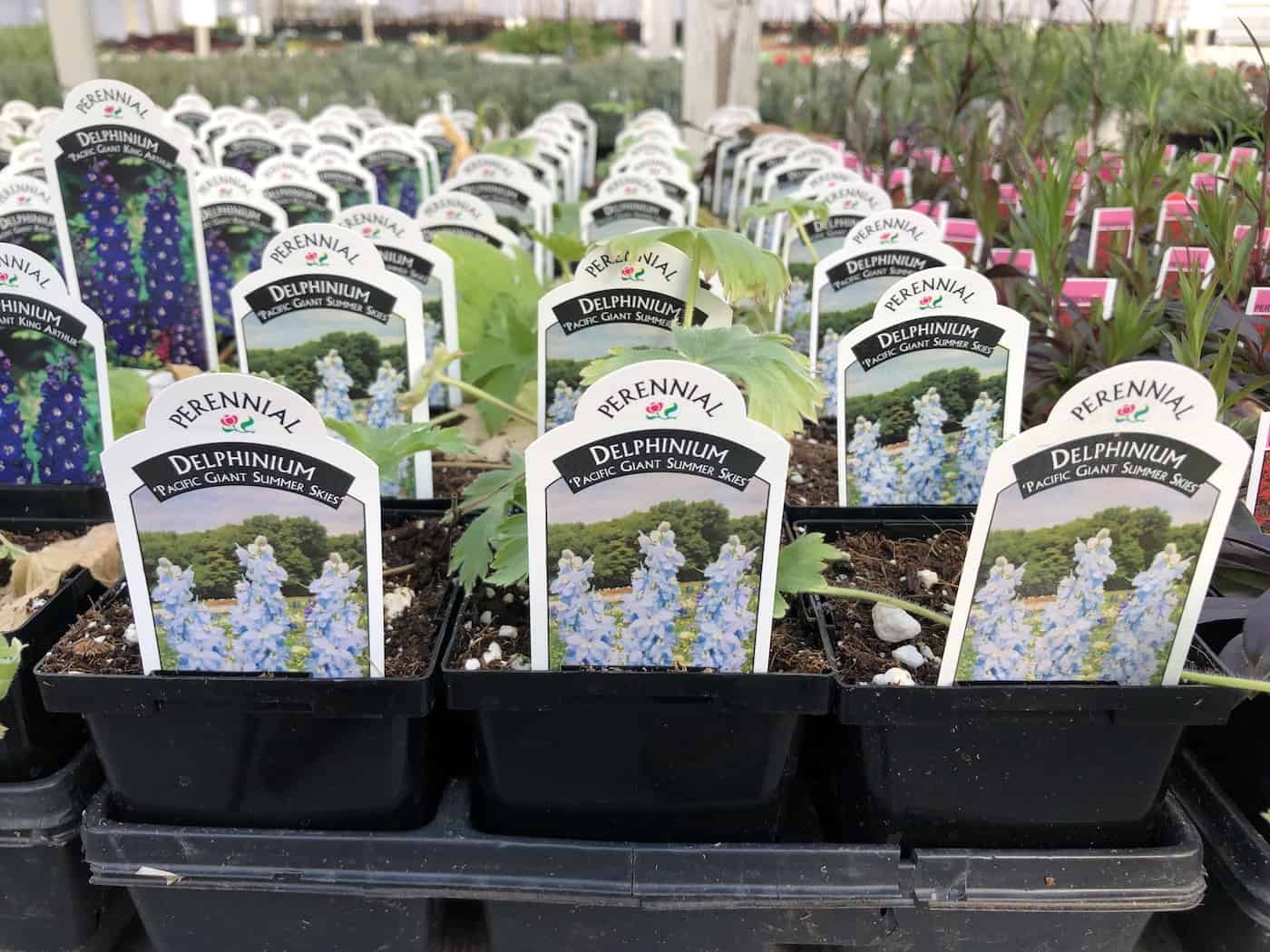
Planting blue delphinium in the garden
The proper planting time for delphiniums is generally in early spring or early fall. They are best planted in the early morning and out of direct sunlight.
Here are the basics for planting blue delphinium plants in your garden:
- Delphiniums grow best in moist soil with moderate air temperatures.
- Choose a planting spot with ample sunlight that’s also shielded from the wind.
- Research the height of the plant and plan its location to accommodate its full height.
- Plant the potted nursery plant in a wide hole, but not a deep hole.
- The soil line of the potted delphinium should be level with the surrounding garden soil level.
- Water the plant thoroughly after planting.
- Apply a nutrient-rich top-dressing of compost or organic fertilizer.
- Cover the soil with an organic mulch to conserve soil moisture.
The video shown below is one I made showing how I plant delphiniums. I’m planting some of my favorite blue types in this video!
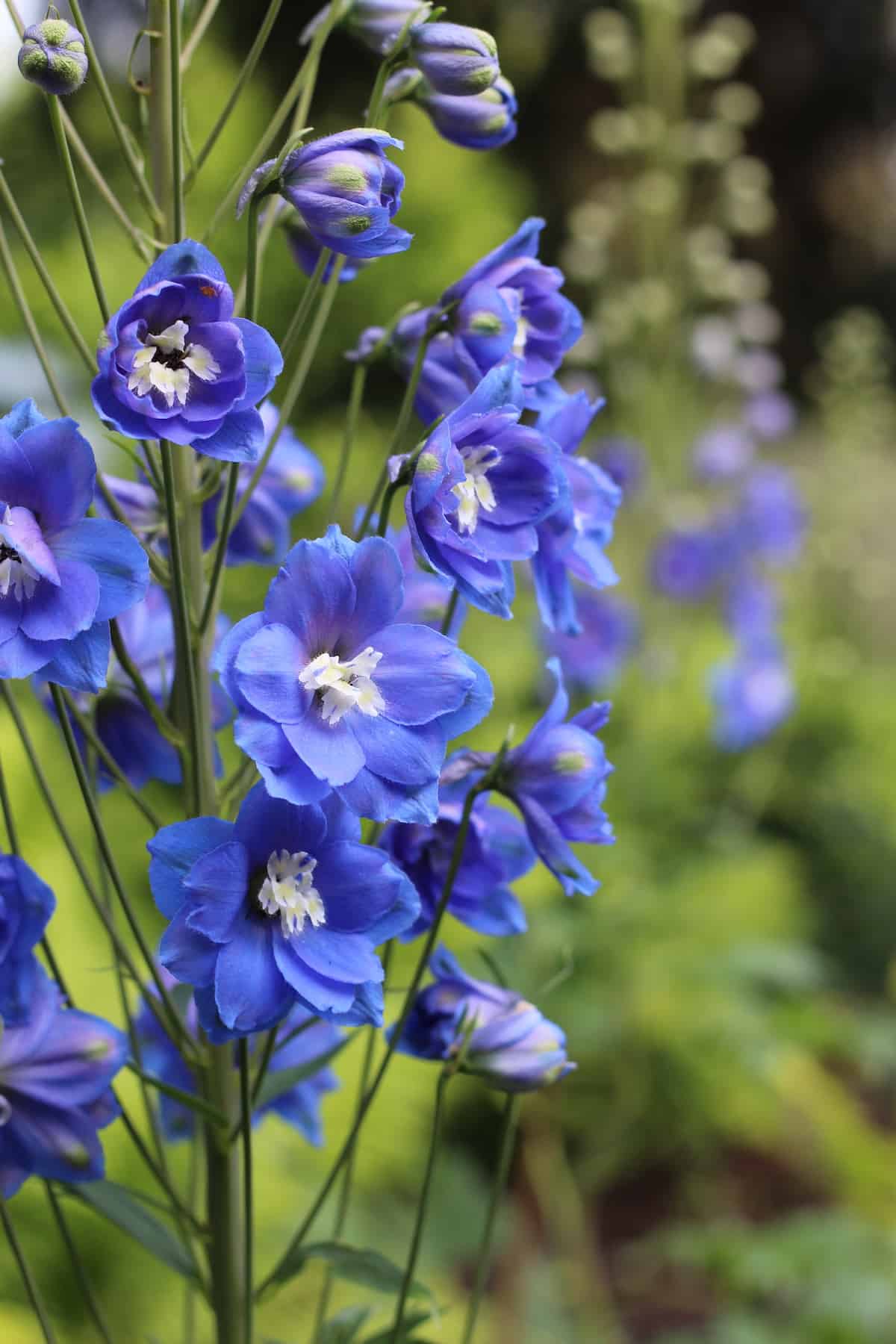
Growing blue delphinium flowers in the garden
Blue delphiniums do require more maintenance than most other cottage garden perennials, but the effort is worth it for the beautiful blooms! Here are the basics for growing beautiful blue delphiniums in your garden:
- Keep the soil consistently moist, but not soggy (or dry).
- Water at the base of the plant and try to keep water off the leaves when possible.
- A sprinkle of wood ash from the fire pit can help deter pests and disease.
- Stake plants when they reach 12″ tall. Continue staking at 12″ intervals. I like to place the stakes behind each stalk to hide them as best as I can.
- Keep an eye out for aphids, slugs, and snails (especially after rainfall).
- Water requirements tend to increase as the plants put on more foliage and summer temperatures increase.
- Expect blooms in June or July, generally following peony bloom season.
- A second smaller flush of flowers sometimes follows in late summer.
